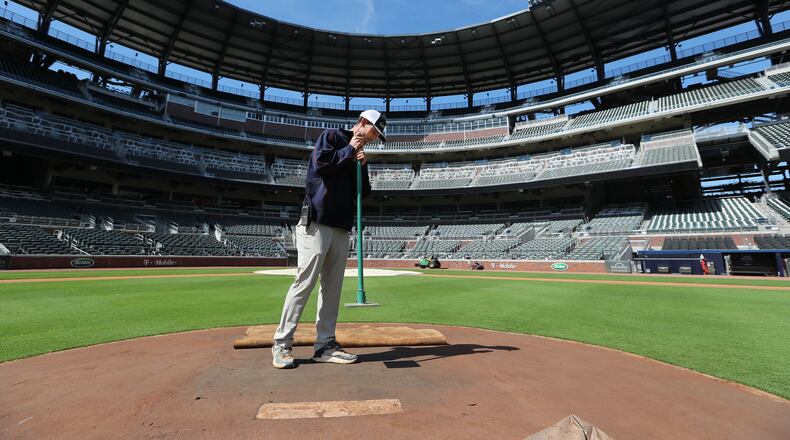An analysis
The dispute between Major League Baseball and its players’ union over the economics of starting the pandemic-delayed season sounds familiar.
It sounds very much like the rhetoric around the strike that wiped out two summer months of the season in 1981, the lockout that derailed spring training in 1990 and, yes, even the strike that forced cancellation of the World Series in 1994.
Now, as then, both the owners’ and players’ sides have made proposals that had zero chance of being accepted by the other.
The owners last week proposed that the higher-salaried players take huge pay cuts on top of the prorated salaries they agreed to in March, claiming that otherwise the clubs would lose more money for each game played without fans in attendance. The players countered Sunday by proposing more games, 114 rather than 82, and no further pay reductions. Then came word Monday that the owners might implement a season of as few as 40 or 50 games at prorated salaries if they can't wrangle more pay cuts.
MLB vs. Players’ pay proposals
Maybe there’s a compromise to be found in there somewhere, but on the surface none of it seems to suggest progress toward a solution. You might have thought that it would be different this time, that both sides would have approached negotiations more productively from the start amid COVID-19. Instead, it has been negotiation as usual for baseball, where again it is as if the two sides are speaking different languages, unable to agree even on what it was they agreed to in March.
Whether there’ll be a Braves season, an MLB season, or how much of a season, hangs in the balance.
J.C. Bradbury, a Kennesaw State University economist who has written two books on baseball economics, has seen it all before.
“The way these things get settled is through basically sheer brute force, each side trying to convince the other side that you’re willing to risk all the damages,” Bradbury said Monday. “The owners will say, ‘Hey, we won’t play a game next season. Let’s see how desperate the players get.’ And the players will say, ‘Oh, no, you need to pay us a ton of money. You won’t make any money without us.’ Both parties have an incentive to not be honest with each other.
“It’s a bargaining game,” Bradbury continued, “and from a fan’s perspective it is very frustrating because you say, ‘Why can’t they just agree?’ … This is sort of two big heavyweights staring each other down before a fight.”
They come to this fight with the union’s longstanding distrust of the owners exacerbated by many players’ unhappiness about the current collective bargaining agreement, which took effect in 2017.
“Things being acrimonious before this (negotiation) started makes it more difficult,” Bradbury said.
Other major sports leagues also have labor disputes — the NHL lost the entire 2004-05 season to a lockout — but none approach the process with the historical rancor of baseball.
MLB has had eight strikes or lockouts since 1972, although none since the disastrous strike that ended the 1994 season in August and wiped out the postseason and brought replacement players to spring training camps in 1995. MLB also has been at the brink of stoppages on other occasions.
But the current situation is different from all the other disputes because of the long-term damage that would be inflicted on the sport by scrapping a season over a financial squabble during a time of public health crisis and soaring unemployment.
Eventually, the two sides might well come to an agreement and have a partial season of some length, but time is running out for a hoped-for start of games without fans by the Fourth of July weekend. Assuming the teams will need about three weeks of training before games begin, an agreement would need to be reached in time for workouts to start by June 12 or so.
Playing a 114-game schedule, as the players proposed, would require the season to run from late June through late October, followed by playoffs in November. The owners’ 82-game proposal would have the season run from early July through September, with the playoffs in October as usual.
MLB vs. Players’ season proposal
The agreement reached in March said the players would be paid a prorated portion of their contracts for games that are played (in other words, 1/162nd of their contracted salary for each game). The players’ side has contended that means the pay issue is settled. But the March agreement also said the parties “will discuss in good faith the economic feasibility of playing games in the absence of spectators” if necessary. The owners’ side has contended that means the agreement on pro rata salaries applied to games with fans in attendance and that more pay cuts were contemplated all along if games had to be played without fans.
A disagreement about an agreement fits perfectly into baseball’s tortured history of labor relations.
As for what happens next: “I think they’re going to hold out as long as possible,” said Bradbury, referring to both sides. But ultimately, he predicted, “someone is going to cave. When there is money to be made, someone will find a way to do it.”
Meanwhile, the clock again ticks ominously for baseball.
About the Author
Keep Reading
The Latest
Featured



